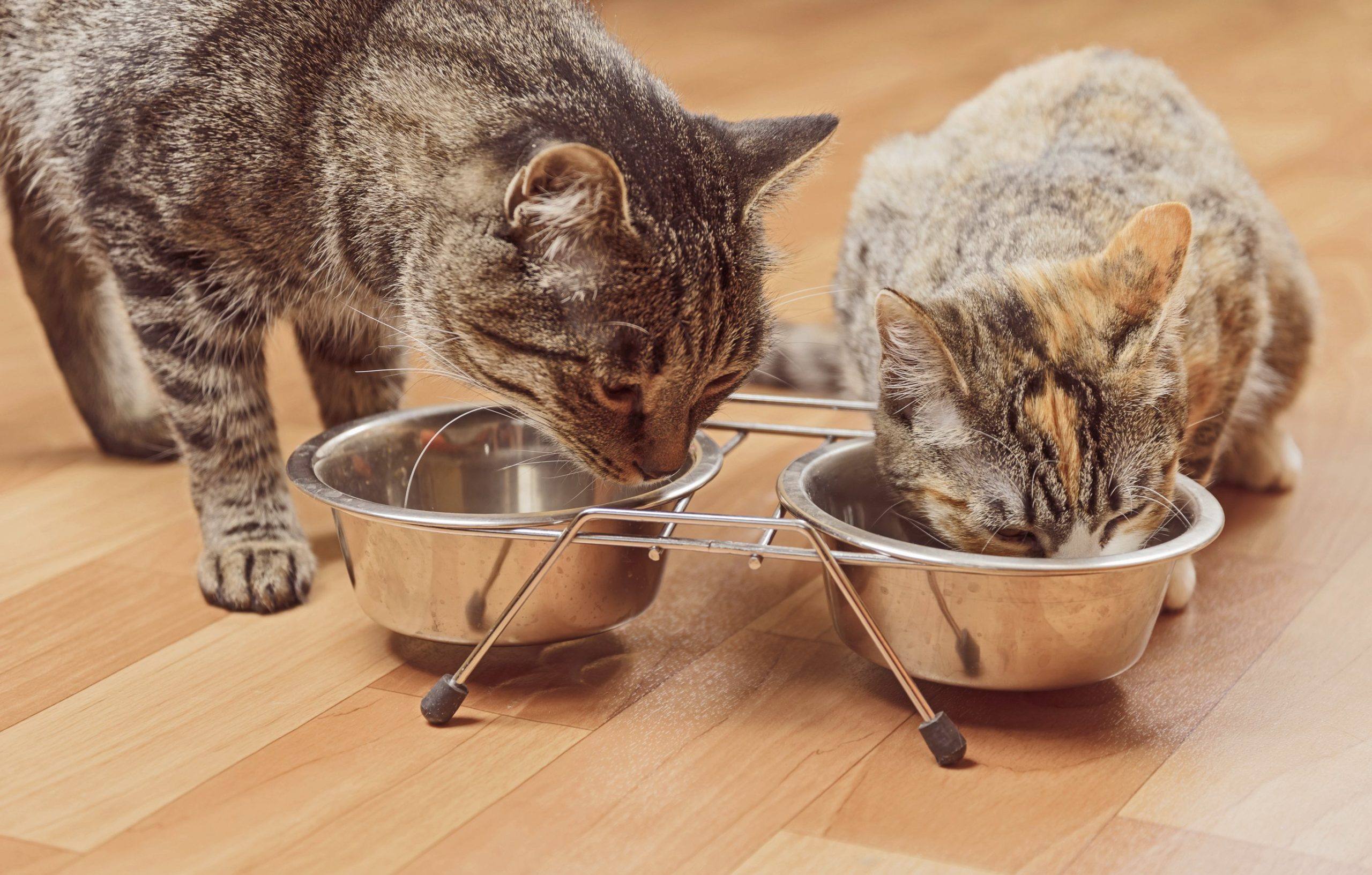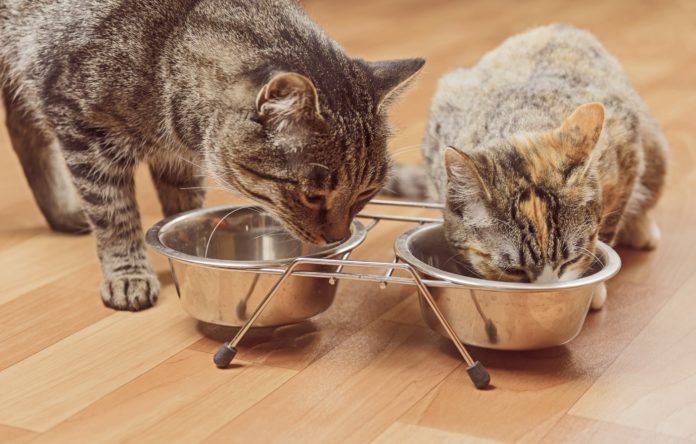You heard somewhere that when your cat reaches the age of seven — or was it nine? — it’s time to switch him to a senior food formula. That seems to make sense; after all, you’ve most likely changed your own diet as you’ve aged, cutting back on calories and carbohydrates and increasing supplements.
thinkstock

But is what’s right for you also right for your cat? Not necessarily.
“One size does not fit all,” emphasizes Lisa Freeman, DVM, PhD, a board-certified veterinary nutritionist at Cummings School of Veterinary Medicine at Tufts University. “Every animal needs to be treated as an individual. If you’re already providing a good quality, nutritionally balanced commercial food to your cat, there is absolutely no reason to change what you’re doing based simply on his age.”
The time to change a cat’s diet, Dr. Freeman says, is when there’s a reason to do so, not because of a birthday. Reasons include a cat that is over- or underweight, or that develops medical problems. Many medical conditions common in older cats — such as cancer, kidney disease, heart disease and diabetes — can benefit greatly from a modified diet as part of overall medical therapy.
And if you didn’t know that, you’re not alone. Dr. Freeman and Dana Hutchinson, DVM, evaluated public and veterinarian perceptions of 26 commercial cat diets marketed as senior diets, and the findings were similar to a parallel study the researchers conducted on senior dog nutrition. Of those respondents who owned a senior dog, 42.8 percent were feeding a senior diet, but only 26 percent were doing so on a veterinarian’s recommendation.
What do seniors need?
Exactly when a cat becomes “senior” depends on heredity, health, size and other factors. But even if you and your veterinarian agree that your pet has arrived at that stage of life, it doesn’t necessarily mean his nutritional needs have changed. Dr. Freeman suggests that owners review senior cat care guidelines published by the American Association of Feline Practitioners at catvets.com. Another good resource for determining your pet’s life stage can be found at isfm.net.
The two groups that monitor animal nutrition — the Association of American Feed Control Officials and the National Academies’ National Research Council — do not have senior cat-specific nutrient profiles. Their recommended minimums for protein, calcium, sodium, phosphorous and other nutrients are based on levels for adult cats. Dr. Freeman believes that further study is needed before veterinarians can make truly informed recommendations about the nutritional needs of healthy senior cats.
What’s in the bag or can?
Most survey respondents said ingredients were the most important factor in selecting a food, and that they believe senior diets are lower in calories and specific nutrients.
However, reading cat food ingredient labels can be bewildering. The researchers compared 26 commercial senior diets with label descriptions such as “senior,” “old,” “mature,” “maturity” and “longevity,” and found a wide variation in nutrient profiles.
Some of the products analyzed did have reduced calories versus typical diets formulated for adult maintenance; however, others had more calories. Many older cats do have lower energy requirements, and a reduced-calorie food can be beneficial to help keep them in optimal trim body condition. But while many cats do need to slim down, some lose rather than gain weight as they age because of decreases in appetite, difficulties in taking in food, changes in their ability to taste or smell, etc. — and therefore, they need more calories, not fewer.
Another common belief: Older cats need less protein.
“Some senior diets reduce protein, following the logic that this would reduce the likelihood of kidney disease,” Dr. Freeman says. “However, the evidence now shows that low-protein diets do not prevent kidney disease in older cats. It’s not necessary to restrict protein unless a veterinarian identifies a medical reason to do so.”
In fact, older cats may actually have slightly higher protein requirements than younger adults.
The various products also varied in their sodium, phosphorus and fiber content as well as the addition of nutrients such as omega-3 fatty acids, joint supplements, antioxidants and other supplements. Here again, the researchers caution against the temptation to add more omega-3s and antioxidants to your cat’s diet just because you’ve made those adjustments to your own nutritional habits. They note that a senior cat’s ideal diet depends on many factors, including body condition and underlying diseases, and call for an evidence-based consensus on the minimal and adequate nutrient requirements.
Is this deceptive marketing by pet food companies? Not necessarily, Dr. Freeman says. “The companies are saying that as your pet ages, you need to think about what it’s eating,” she says. “And they’re right; you do need to think about this.”
Pet food selection guide
Dr. Freeman says that while high-quality ingredients are important, there are other important questions that you should ask a company representative directly if you are unsure. These include:
– Is the food complete and balanced? Over-the-counter foods should never say “for intermittent or supplemental use only” — which means they are not complete and balanced.
– Is the food formulated for the appropriate life stage? Since further research is needed to create diets ideal for seniors, find one for adult maintenance, not for growth or all life stages — these diets are intended to meet the needs of kittens.
– Does the company conduct feeding trials or are its diets only formulated to meet AAFCO profiles? (See related article in Catnip, September 2014.)
– Does the company have at least one full-time PhD-level or board-certified nutritionist on staff? Most small companies don’t, Dr. Freeman says.
– What specific quality control measures does the company use to assure the consistency and quality of the product line?
– Does the company conduct research on its products, and are the results published in peer-reviewed journals?
– Where are the diets produced and manufactured?
– Can the company provide a complete product nutrient analysis of its foods?
Where to get help
The study identifies some opportunities for veterinarians to further educate themselves about nutrition, Dr. Freeman says. It also demonstrates the importance of thorough discussions of nutrition between veterinarians and owners. An in-depth discussion is especially critical when your older cat’s food-related behavior changes. For example, weight loss and loss of appetite can be associated with feline diabetes mellitus, fatty liver disease, chronic kidney disease, heart disease or hyperthyroidism.
“Bring up the topic with your veterinarian when you and your pet are in for your twice-yearly visits,” she says. “When you’re talking about health issues, make sure your veterinarian knows what you’re feeding and if you’re giving any supplements, and ask if you need to modify the diet.”
Some owners may wish to consult with a board-certified nutrition specialist. This can be done online, in person or by phone. A list is available at acvn.org.
Finally, it’s important to remember that what your cat eats goes beyond what he’s fed at meals. “People also need to think about what’s appropriate in treats,” Dr. Freeman says. “How many treats are you giving a day, and what do they contain? Similarly, what about the way you’re providing medications to your cat? Common foods used to administer medications can be high in sodium, protein and other nutrients that may be important to restrict, depending on any underlying medical conditions.”— Catnip staff




